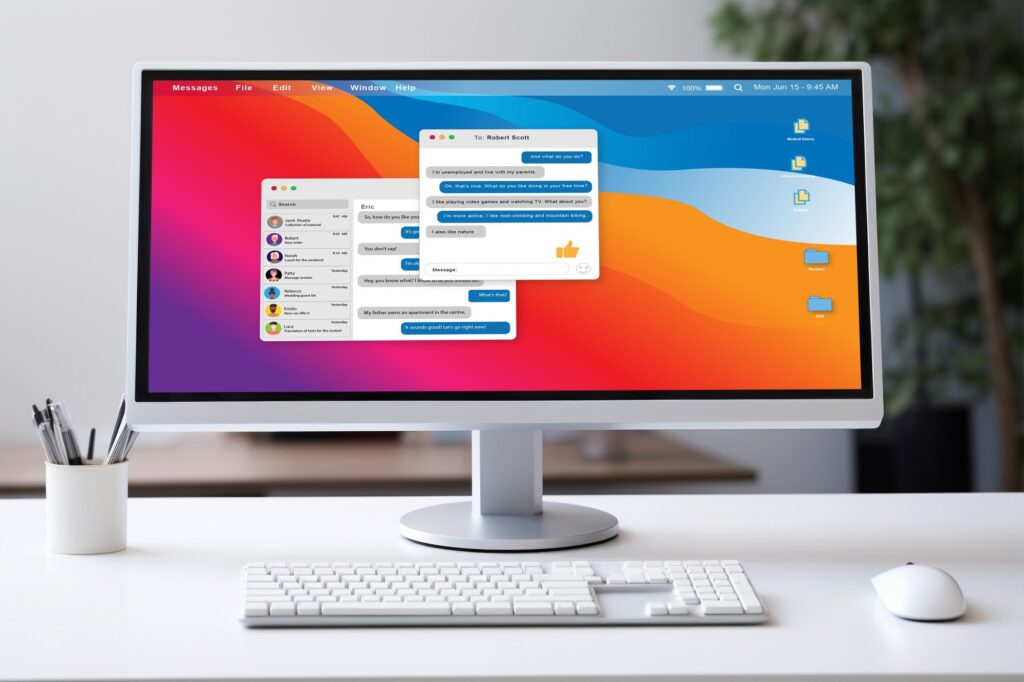Thriving in the Virtual Workspace: Microsoft Teams as Your Ultimate Remote Ally
The recent global events have demonstrated the critical importance of adopting flexible, robust collaboration tools to accommodate the rapidly expanding remote workforce. As businesses continue to navigate an uncertain landscape, the ability to work remotely has become a crucial imperative for many organisations. A reliable, feature-rich platform for communication, collaboration, and productivity is essential to ensure the success and efficiency of remote teams.
Microsoft Teams, an integral part of the Microsoft 365 suite, is a comprehensive solution designed to meet the unique challenges of remote and hybrid workforces. With an impressive array of features such as chat, video conferencing, document collaboration, and seamless integration with other Microsoft 365 applications, Teams empowers businesses to maintain productivity, efficiency, and cohesion even in a remote work environment.
This blog post aims to explore Microsoft Teams and its capabilities in supporting remote work. We will delve into Teams’s key features and functionalities, discussing how they can facilitate smooth communication and collaboration among remote team members. Furthermore, we will examine the benefits that Microsoft Teams can offer businesses adapting to the remote work landscape, and provide practical guidance on implementing Teams within your organisation, including tips for configuration, user management, and staff training.
Join us as we discover the transformative power of Microsoft Teams, enabling businesses to embrace remote work more effectively and foster a dynamic, collaborative environment that drives growth and success in an ever-changing world.
Key Features of Microsoft Teams for Remote Work
Microsoft Teams boasts an array of features designed to cater to the diverse needs of remote workforces. Let’s delve into some of the most notable features that facilitate remote teams’ communication, collaboration, and productivity.
- Chat and Channels
Microsoft Teams offers robust chat functionality, enabling real-time communication between team members. Users can engage in one-to-one conversations, group chats, and channels. Channels are organised by topic or project, allowing team members to discuss and collaborate on specific tasks or initiatives. This structure ensures that communication remains focused and relevant, making it simpler for team members to stay updated with ongoing projects and discussions.

- Video Conferencing and Screen Sharing
Video conferencing is an essential feature for remote teams, facilitating face-to-face communication and collaboration. Teams supports high-quality video and audio calls, available for both one-to-one and group meetings. Users can easily schedule meetings, access meeting recordings, and share screens to enhance collaboration during virtual calls, ensuring a smooth and efficient remote work experience.

- Document Collaboration and File Sharing
Effective document collaboration is vital for remote work. Microsoft Teams provides seamless integration with Microsoft 365 applications such as Word, Excel, and PowerPoint and storage solutions like OneDrive and SharePoint. This integration enables team members to co-author documents in real time, share files easily, and maintain version control, significantly reducing friction and fostering greater teamwork. - Third-Party App Integration and Customisation
Microsoft Teams supports integration with various third-party applications, allowing organisations to extend its functionality and create a customised workspace tailored to their specific needs. Users can add apps like Trello, GitHub, and Adobe Creative Cloud directly to their Microsoft Teams workspace, streamlining their workflows and ensuring all their essential tools are accessible from a single, unified platform.
Benefits of Implementing Microsoft Teams for Remote Workforces
Adopting Microsoft Teams as a primary collaboration tool provides several key benefits to businesses, particularly those with remote or hybrid workforces. These benefits include:
- Improved communication: The comprehensive chat, channels, and video conferencing features in Microsoft Teams ensure that remote team members can easily communicate and collaborate, minimising the barriers often associated with distance.
- Increased productivity: With its seamless integration of Microsoft 365 applications and third-party tools, Teams enables remote employees to access all the resources they need from a single platform, reducing distractions and boosting productivity.

- Enhanced security and compliance: Microsoft Teams is built on top of the robust security infrastructure of Microsoft 365, offering a secure platform for remote teams to collaborate and share sensitive information. The platform also includes features such as data loss prevention and custom security settings, ensuring compliance with industry standards and regulations.
Best Practices for Implementing Microsoft Teams in Your Organisation
Successfully implementing Microsoft Teams within your organisation requires thoughtful planning and consideration. The following best practices can help guide you through the process and ensure a seamless transition to a remote work environment:
- Establish a clear structure: Organise your teams and channels in a clear, logical manner, ensuring team members can easily navigate and participate in relevant discussions. Consider creating guidelines for using different communication methods, such as chat, channels, and video calls, to avoid misunderstandings and inefficiencies.
- Provide adequate training and resources: Ensure your team members have the knowledge and skills to use Microsoft Teams effectively. Offer training sessions, guides, and other resources to familiarise staff with the platform’s features and capabilities.

- Encourage engagement and adoption: Foster a culture of open communication and collaboration by actively promoting the use of Teams for all team-related discussions and activities. Encourage team members to share updates, files, and ideas through the platform, reinforcing the value of collaboration and teamwork.
- Continuously review and optimise your Teams setup: Regularly assess the effectiveness of your Microsoft Teams implementation, gathering feedback from team members and identifying areas for improvement. Continuously refine your structure, settings, and app integrations to ensure your Teams environment remains optimised for remote work.
Embrace Remote Work with Microsoft Teams
Microsoft Teams provides a comprehensive solution for remote work, offering robust features and integrations to facilitate communication, collaboration, and productivity. By leveraging the power of Teams and following best practices for implementation, organisations can fully embrace the potential of remote work, ensuring a cohesive, efficient, and dynamic team environment that drives success in an ever-changing landscape.
Ready to empower your remote workforce with Microsoft Teams? Contact Influential Software Services today, and let our team of experts help you navigate the implementation process, ensuring a successful and tailored solution for your organisation.





